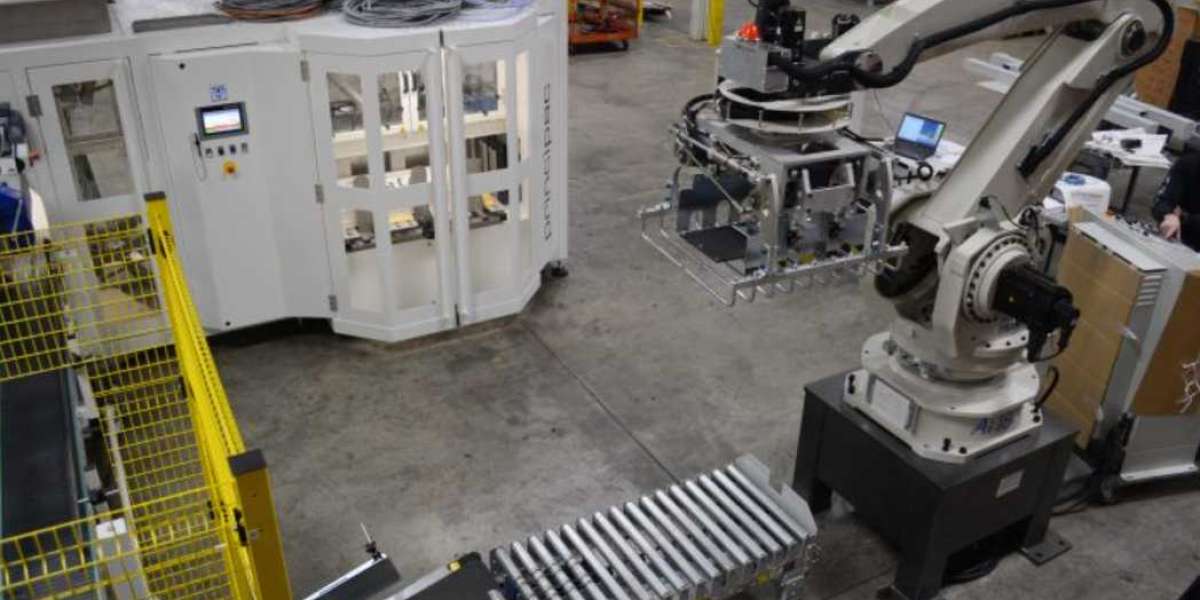In the history of manufacturing and logistics, few tasks have been as physically demanding and repetitive as stacking finished products onto pallets. Palletizing was once the ultimate bottleneck—a necessary, often back-breaking task that limited throughput and was prone to human error.
Today, that landscape has changed fundamentally. We are witnessing an incredible evolution, moving from the age of pure manual labor to the era of the robotic palletizer, powered by smart software and adaptive technology.
The Era of Manual Palletizing: High Cost, High Risk
For decades, the standard procedure involved workers manually lifting and placing cases weighing anywhere from 10 to 50 pounds (or more) onto pallets for hours on end. This created significant, well-documented challenges:
- Inconsistency: Fatigue leads to poor stack patterns, instability, and increased product damage during transport.
- Safety and Injury: High rates of musculoskeletal disorders (MSDs) and high worker turnover were common, leading to skyrocketing operational costs.
- Speed Limits: Production lines could only run as fast as the human operator could sustain the stacking pace.
In a modern 24/7 economy, this method was unsustainable. The only path forward was automation.
The First Wave: Fixed Robotic Palletizers
The first wave of automation introduced the dedicated robotic palletizer. These machines were monumental achievements, bringing unprecedented speed and consistency to high-volume manufacturing environments.
These early robotic systems offered:
- Relief from Repetition: Robots could handle the heaviest cases and maintain a rigorous pace, alleviating labor concerns.
- Stack Quality: They achieved mechanically precise stacking, resulting in more stable pallets for shipping.
However, these early systems had a critical limitation: they were inflexible. They were designed to handle one size, one product, and one pattern. If the product size changed or a mixed pallet was required, the system needed complex, time-consuming, and expensive reprogramming, often requiring external engineering support. They excelled at high-volume, low-mix operations, but struggled in the dynamic world of fast-moving consumer goods (FMCG).
The Smart Revolution: Adaptive Palletizing
The current generation of automation has introduced smart robots that bridge the gap between speed and flexibility. This revolution is driven by the integration of vision systems, advanced grippers, and Artificial Intelligence (AI).
The modern robotic palletizer is not just an arm that moves; it is an integrated system that senses, learns, and adapts:
- Mixed-SKU Handling: Using 3D machine vision, the robot can identify multiple case sizes arriving in random order. AI algorithms instantly calculate the optimal stacking pattern to maximize pallet stability and density in real time.
- Plug-and-Play Integration: Smart systems can quickly be taught new products or new patterns through user-friendly interfaces, dramatically reducing changeover time.
- Space Optimization: Advanced software ensures that products are placed optimally, minimizing gaps and creating load stability that exceeds human capability.
This transition from fixed programming to adaptive intelligence allows manufacturers to embrace flexibility and mass customization without sacrificing automation efficiency.
Choosing Your Strategic Partner
Adopting next-gen automation requires more than just buying hardware; it requires a strategic partnership with an experienced robotic palletizer manufacturer. It's crucial to select a company that understands the regional supply chain demands and can deliver robust, intelligent solutions.
For instance, companies like Columbia Machine India Palletizers focus on engineering systems that are not only durable and fast but also deeply integrated with the latest AI and vision technologies. They provide the necessary expertise to deploy automated systems that deliver high efficiency across diverse product lines and demanding environmental conditions.
The evolution of palletizing shows a clear path: from strenuous manual work to rigid, fast machines, and finally to flexible, intelligent systems that are essential to resilient global logistics.
I’ve drafted the content to cover the history and current state of palletizing. Would you like to focus the next section on the specific ROI of these modern systems, or maybe explore the software and interface aspects?








